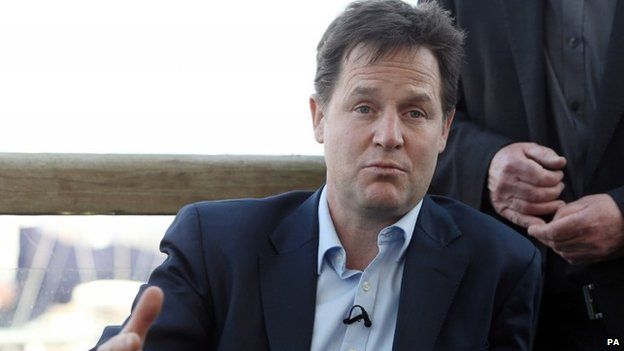Election 2015: Doing the maths on a hung Parliament
- Published

Who will really call the shots if we have a hung Parliament?
With numerous parties expected to win seats it is not easy to check all the permutations for forming a coalition or how a minority government could get its legislation through.
But mathematicians have a tool for working out how power is distributed under such circumstances - it's called the Banzhaf Power Index.
This is based on calculating the proportion of cases in which each party could provide the swing votes that would convert the losing side into the winning side.
The BBC Radio 4 programme Campaign Sidebar asked Hannah Fry, a mathematician at University College London, to calculate the Banzhaf power index (BPI) for some plausible electoral scenarios.
This is what she came up with:
This analysis can apply not only to coalition negotiations but also to a minority government trying to get legislation passed on a vote-by-vote basis almost daily.
From the perspective of the mathematical calculations, it makes no difference whether Labour or Conservatives are the larger of the two main parties.
This assumes a predicted five constituencies won by Sinn Fein, whose MPs do not take up their seats at Westminster. That means that the effective threshold for a Commons majority is 323.
Finely balanced
If the Lib Dems get 30 and the smaller parties get 20, then 273 seats could be a key target for the two big parties. That's what they would then require to achieve a majority without needing the backing of the SNP.
This is illustrated by the two scenarios above. In the first one the SNP power score is already much higher than its proportion of seats, but in the second it's the same as the lower of the top two parties.
Unless the Lib Dems get more than 30 or so, which is the maximum of most forecasts, they are in a much weaker position than the SNP if that gets about 40.
That's because on these scenarios matters are so finely balanced that the SNP could probably just provide the swing votes for a majority, but the Lib Dems couldn't do so without the additional assistance of the smaller parties.
If one of the two big parties pulls far enough away from the other but is still significantly short of a majority, then the Lib Dems would move into the same power league as the SNP. If the biggest party is very close to a majority then the other small parties could tip the balance and start to catch up too.
Clearly these are only some possible, if plausible, scenarios. The Banzhaf Power Index can equally well be used to look at other outcomes at Westminster. Perhaps the political parties need to recruit some mathematicians - if they haven't already done so.
Martin Rosenbaum is the editor of Campaign Sidebar
- Published11 April 2015